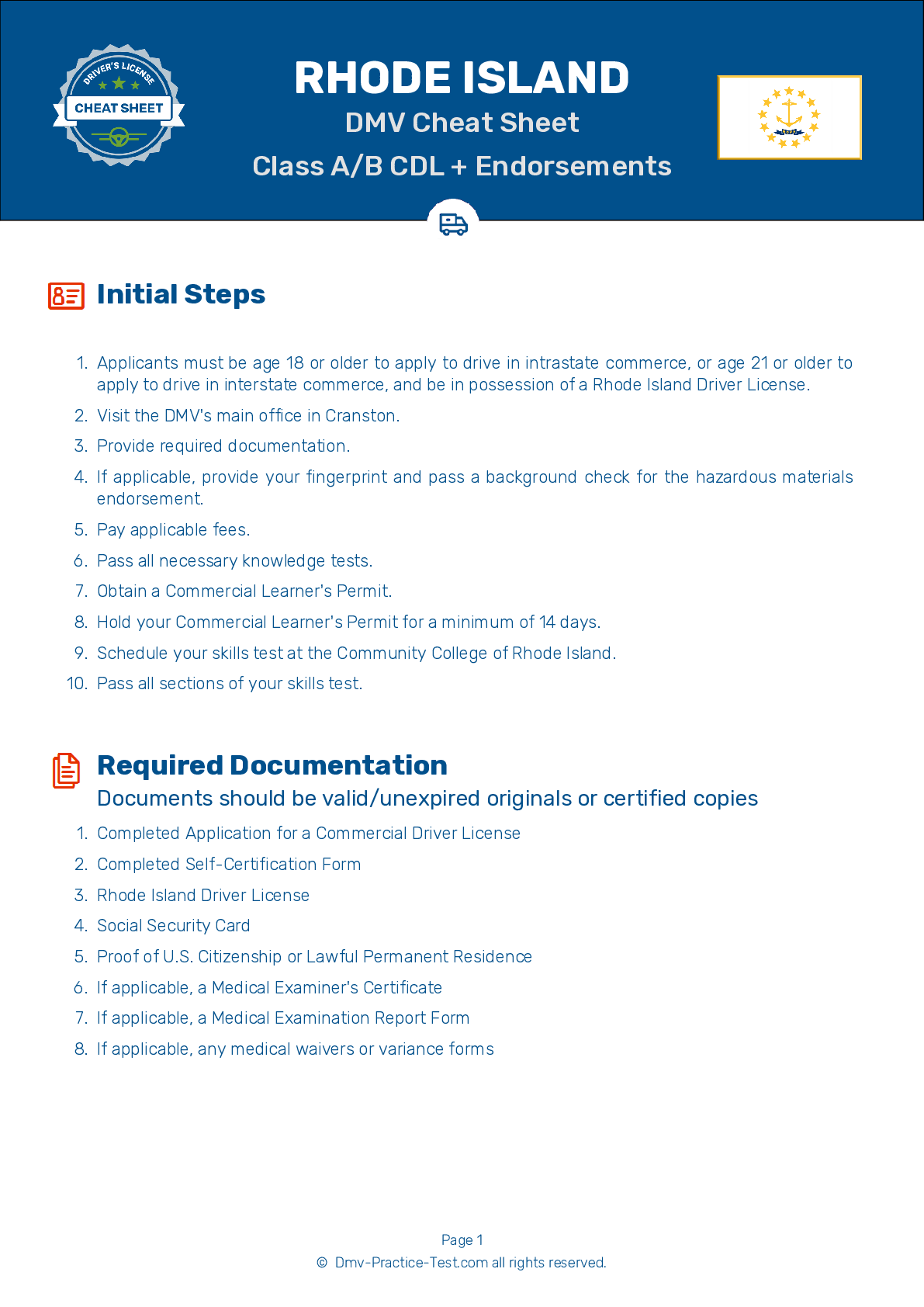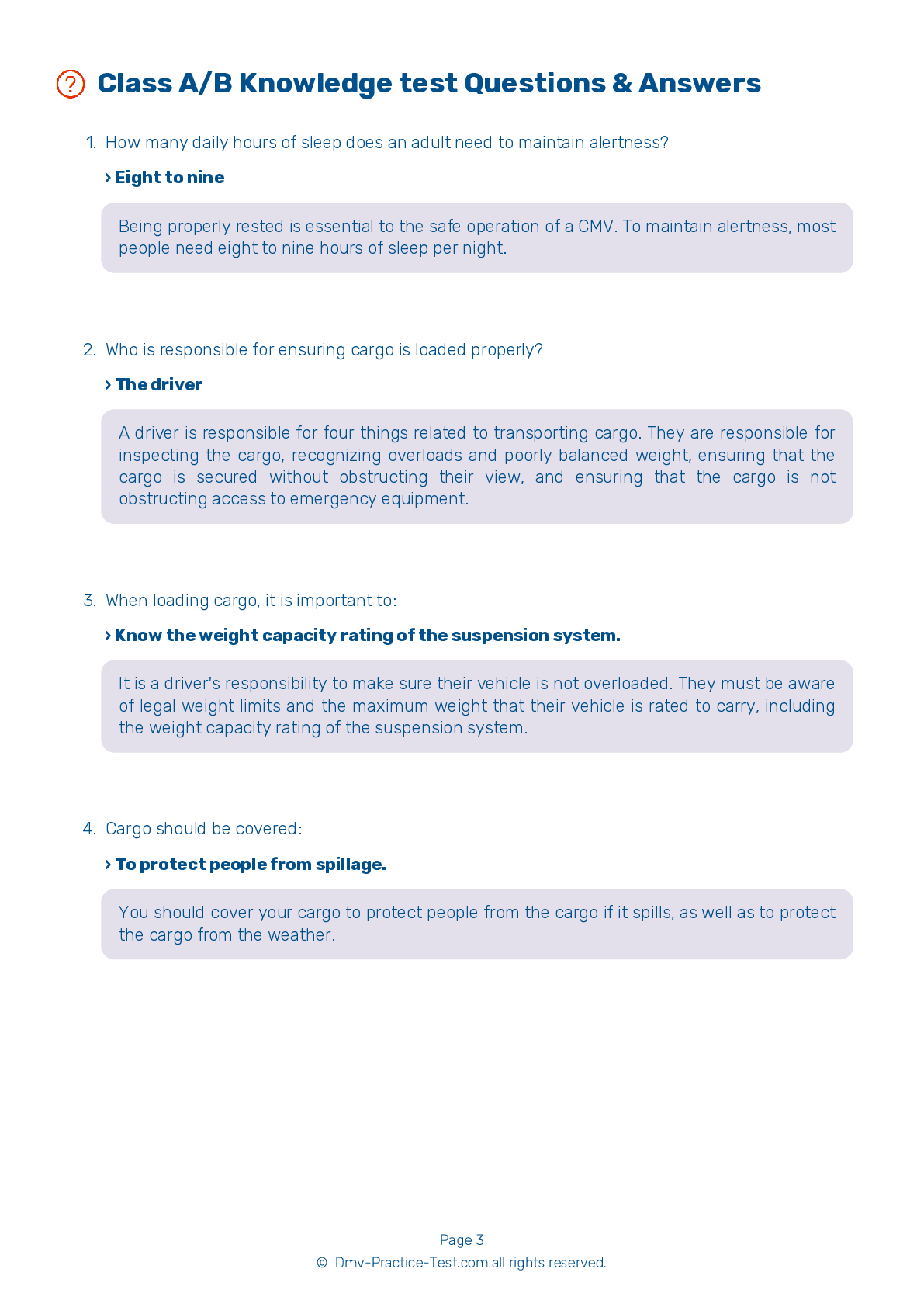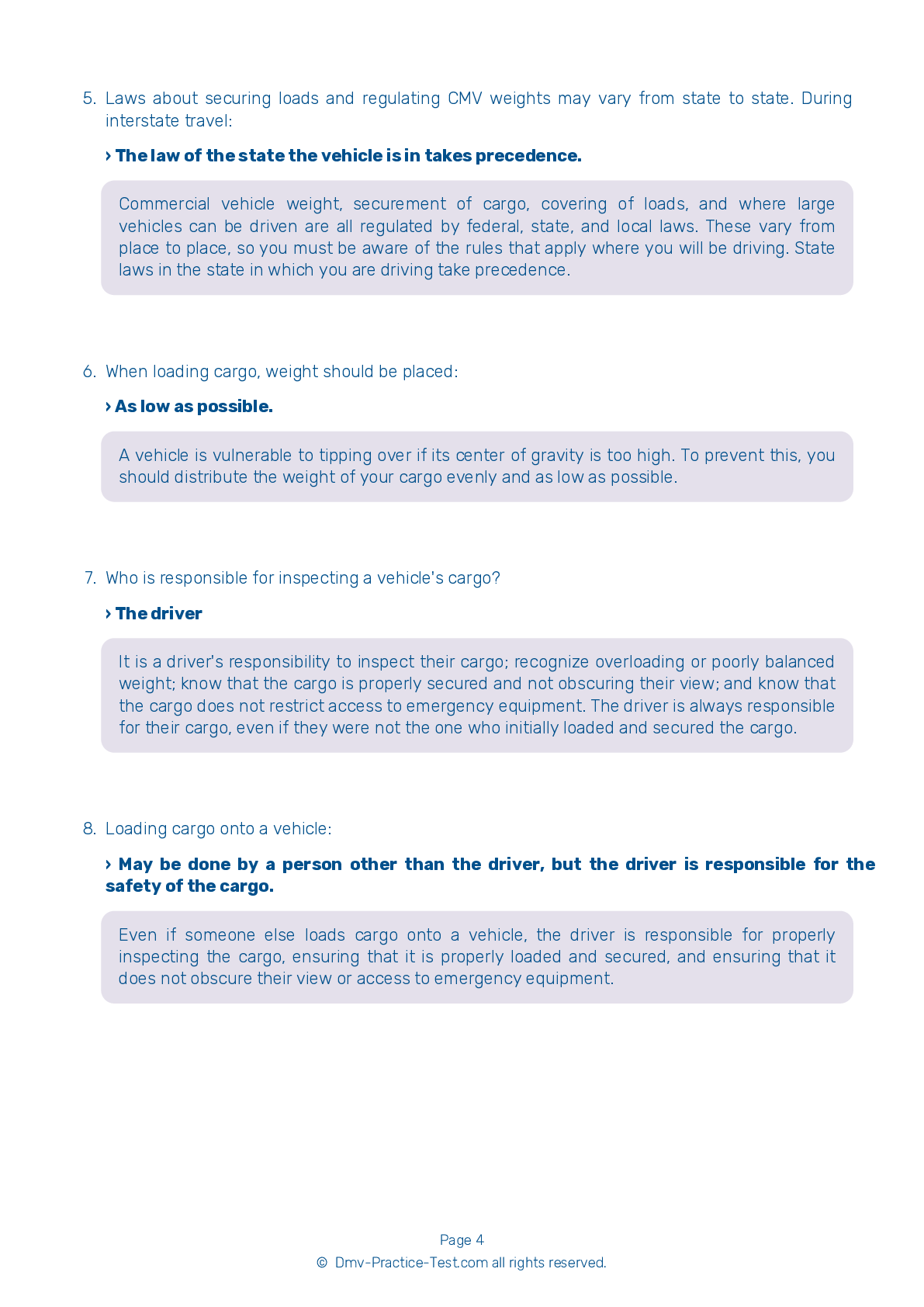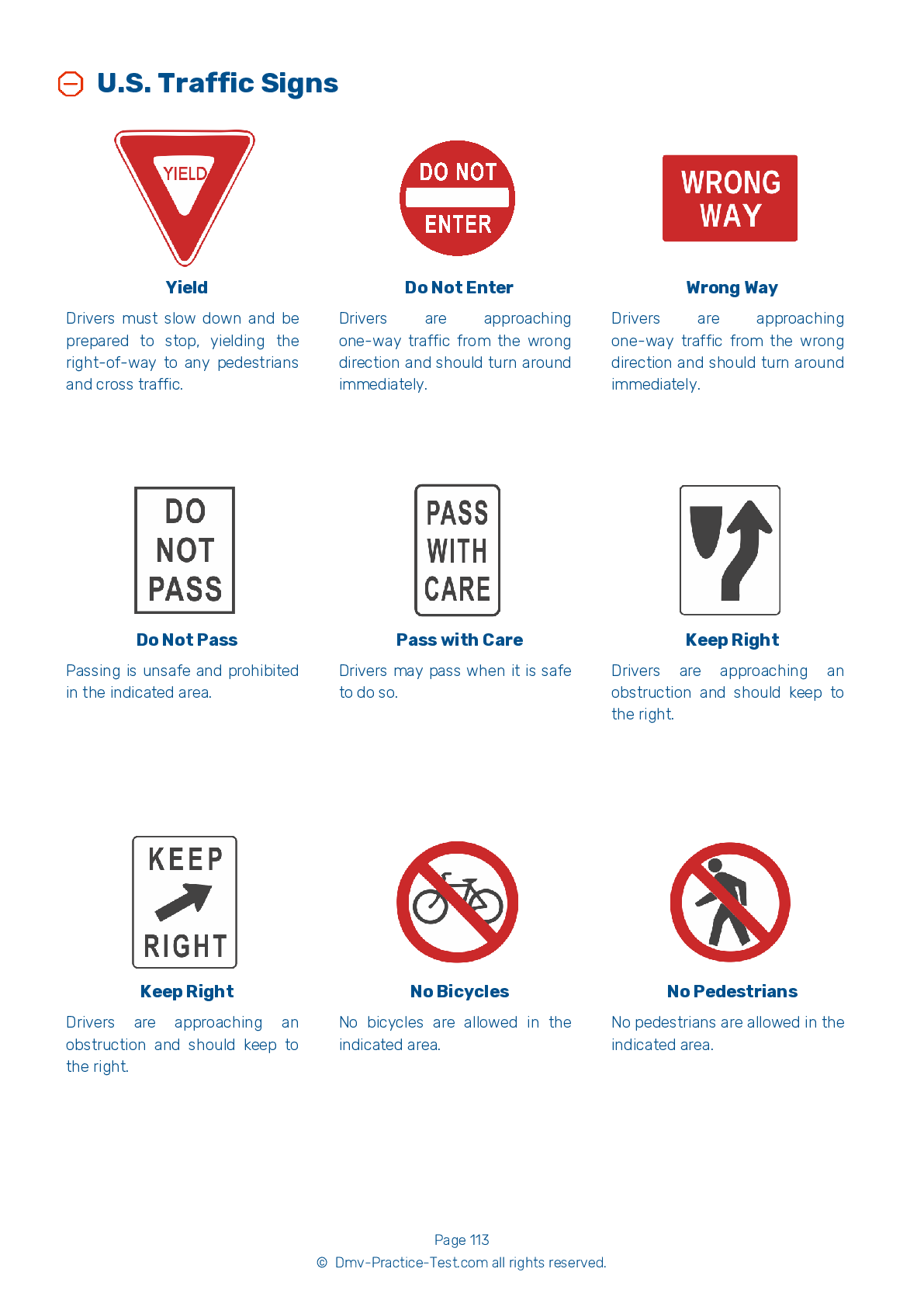Knowledge Test Class B #1
Class B Driving Test | Rhode Island 2025 #1 Page 2 of 7
Train for FREE online with our Rhode Island class B license test. The official exam test consists of several obligatory parts, with all of them checking your knowledge of different blocks of road rules. If you need to obtain a RI CDL class B permit in 2025, practice as much as possible. Free sample tests published on our website will help you check and improve your knowledge and boost your grades. Please bear in mind that CDL class B requirements may vary from state to state.
50
40
20
8 . One way to avoid becoming an aggressive driver is to:
To help avoid frustration, which can lead to aggressive driving behavior, you should begin a trip with realistic expectations about your travel time. Plan ahead to allow time for potential traffic delays. Other strategies to help prevent aggressive driving behavior include driving an appropriate speed and keeping a reasonable following distance; avoiding making gestures at other drivers; and keeping your hands on the steering wheel.
9 . Belts in the engine compartment should:
When inspecting your vehicle's engine, check the belts for tightness and excessive wear. The amount of "give" that is safe for each belt in a given engine will vary, so learn what is appropriate for your vehicle.
10 . ABS brakes:
The purpose of an Anti-Lock Braking System (ABS) is to prevent a vehicle's wheels from locking up when the driver brakes hard on a slippery surface.
11 . What happens when a vehicle hydroplanes?
On a wet road, it is possible for a vehicle's tires to lose traction with the road surface and begin to glide along on the layer of water. This is referred to as hydroplaning. Hydroplaning can occur at speeds as low as 30 mph.
12 . When completing a conventional parallel parking maneuver, you should:
You may be asked to complete a conventional parallel parking maneuver into a parking space that is to the right of your vehicle. You should drive past the parking space before backing into it while bringing the rear of your vehicle as close to the rear of the space as possible. Your vehicle should be completely within the boundaries of the space.
13 . In a vehicle with dual air brakes, a leak in one system ____ the second system.
A dual air brake system is made up of two separate air brake systems. If there is an air leak in one system, it may not affect the other.
14 . One way to prevent hydroplaning on wet road surfaces is to:
When driving on a wet road surface, the risk of hydroplaning is increased if your tire pressure is too low or your tire tread is too worn. If you begin to hydroplane, release the accelerator and push in the clutch to slow down.
2025 Rhode Island | Frequently Asked Questions
To obtain a CDL Hazmat endorsement in Rhode Island, you must hold a valid Commercial Driver's License (CDL). Next, pass the Hazardous Materials Knowledge Test at a DMV branch. After passing, apply for a Transportation Security Administration (TSA) background check. Once cleared, you can add the Hazmat endorsement to your CDL at the DMV.
To obtain a CDL Hazmat license, you must first have a valid Commercial Driver's License (CDL). You'll then need to pass the Hazardous Materials Knowledge Test, undergo a Transportation Security Administration (TSA) background check, and meet specific health and safety requirements. Finally, you must be at least 21 years old and possess a good driving record.
When applying for a CDL Hazmat endorsement, you need to provide proof of U.S. citizenship or lawful permanent residency (like a passport or birth certificate), your current CDL, proof of state residency, and your Social Security Number. Also, you must have a Medical Examiner's Certificate that proves you're physically fit to drive a commercial vehicle.
Yes, there is a dedicated written test for the CDL Hazmat endorsement. This test assesses your knowledge on transporting hazardous materials safely. It includes questions on loading and unloading, bulk packaging marking, driving and parking rules, and emergency response procedures. You must pass this test to obtain the Hazmat endorsement.
The written test for the CDL Hazmat endorsement covers various topics related to hazardous materials, including identifying different types of hazardous materials, understanding shipping papers and placards, handling emergencies, safe loading and unloading procedures, and understanding the effects of hazardous materials on people and the environment.
Yes, there are extra charges for acquiring a CDL Hazmat endorsement. These include fees for the knowledge test, endorsement application, and fingerprinting for the Transportation Security Administration (TSA) background check. Fees can vary, so it's advisable to check with the Rhode Island DMV for the most accurate information.
Yes, a background check is mandatory to obtain a CDL Hazmat endorsement. The Transportation Security Administration (TSA) conducts this background check. It includes fingerprinting and an assessment of your criminal, immigration, and mental health history. This is to ensure the safety and security of hazardous materials transportation.
Yes, specialized training is mandatory for a CDL Hazmat endorsement. Applicants must pass a written test on the handling and transportation of hazardous materials. Also, a Transportation Security Administration (TSA) background check is required. Once these are successfully completed, the endorsement will be added to the driver's Commercial Driver's License (CDL).
No, it's illegal to transport hazardous materials without a valid CDL Hazmat endorsement in Rhode Island. This endorsement ensures that drivers have received the necessary training to handle hazardous materials safely. Driving without a valid endorsement may result in fines, penalties, and potentially even jail time.
You can add the CDL Hazmat endorsement to your existing CDL. You don't need to apply for a new CDL. However, you must pass a written test on hazardous materials and undergo a TSA background check. Once you successfully complete these steps, the Hazmat endorsement will be added to your existing CDL.



